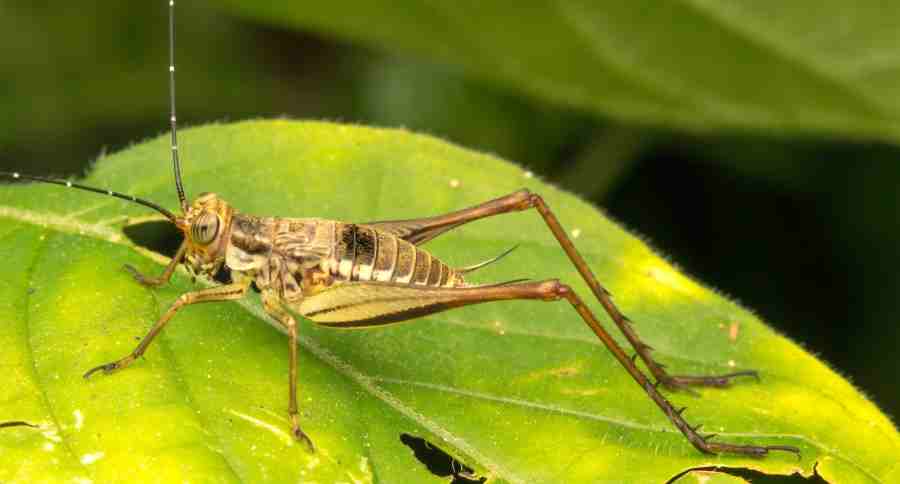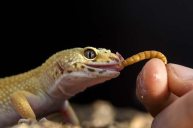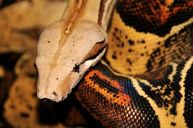House crickets are a popular feeder insect for birds, reptiles, scorpions, tarantulas, chickens and other pets because they are high in protein, reproduce quickly, and require only a small amount of upkeep.
If you are interested in keeping them as pets or for your other animals, we researched how to keep crickets happy!
Crickets are should be fed well and have a reliable water source if you plan to buy in bulk. It's important to note that crickets will drown in standing water, so their primary water source needs to be a sponge or food that contains moisture.
They are easy to gut-load, and active, which is good for pets that like to hunt.
Here are tips for keeping your crickets happy, courtesy of Top Hat Crickets:
1. Create dark places to hide
https://www.instagram.com/p/BiGpeViHx2H/
Using egg flats, paper towel tubes and other cardboard pieces inside your cricket box gives these critters perfect, and inexpensive, places to hide.
2. Use high protein food sources
Easy-to-find food sources like crushed dog food or cornmeal is ideal for maintaining growth and ensuring your crickets are ready for feeding.
3. Lots of fresh-water
Dirty water is one of the worst things for a box, mainly because bad smells can present themselves quickly. Keeping your water source clean and fresh is ideal.
4. Clean cricket box = Happy cricket box
https://www.instagram.com/p/B-wGcWblylh/
When introducing a new batch of crickets to an old environment, it's extremely important to clean and change the box. Passing problems between batches is common, especially when problems linger behind.
5. Maintain even temperature
Top Hat Crickets suggests keeping your cricket box 70 degrees Fahrenheit (for larger crickets) and 90 degrees Fahrenheit (for smaller crickets).
Other common feeder insects include mealworms, super worms, wax worms, and roaches!
Here are some fun facts about cricket species:
- Cricket fighting actually exists in certain countries and you can witness this at certain markets.
- True crickets are probably best known for their incessant chirping on late summer evenings.
- Crickets are insects that are related to katydids and grasshoppers.
- The house cricket is usually a light brown color, has long antennae, hind wings, fore wings and large jumping legs.
- Crickets sing an impressive variety of songs, each with its own purpose.
- A male's calling song invites receptive females to come closer. He then serenades the female with his courtship song.
- Cricket songs: Crickets produce a chirping sound by stridulating, or rubbing body parts together.
- Male and female crickets have auditory organs on their lower forelegs, oval indentations called tympanal organs.
- Although a cricket's keen sense of hearing can protect it from larger predators, it's no protection against the sly, silent parasitic fly. Egg-laying will kill crickets and cricket chirps attract these flies.
- Crickets are high in protein and calcium. Every 100 grams of crickets you consume provides almost 13 grams of protein and 76 milligrams of calcium.
- Crickets are also prized for their voices. Cricket singing in the home is a sign of good luck and potential wealth. Crickets chirping is a beautiful noise.
- What about the species of crickets: One group of cricket relatives is the mole crickets.
- Then there are the bush crickets, or katydids, which come in hot pink and other startling hues.
- Black-colored field crickets will accidentally wander into buildings.
- The latest superfood in the United States is crickets. The cricket insect is dipped in chocolate!
- Crickets do things at night when they're out and about. Crickets chirp at night for the most part.
- Their cricket life cycle is about a year!
- They have compound eyes, developed hind legs, and wing stubs visible on the outside.
- Crickets have relatively powerful jaws, and several species have been known to bite humans.
- Crickets often appear in literature like Pinocchio. Remember Jiminy Cricket?
- Crickets are omnivores yet they prefer plants.
Do you own any crickets? Please leave us a comment below!




